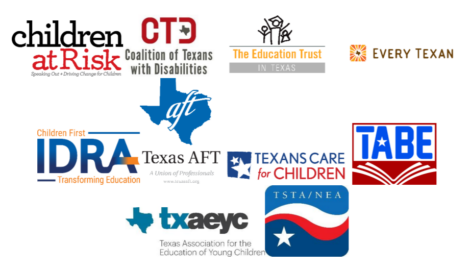The Texas Education Agency is conducting the scheduled review of major rules, including for the education of emergent bilingual students. IDRA and nine other groups submitted comments to retain current rules to support quality bilingual education for the more than 1 million emergent bilingual students in our schools and to prepare to make improvements based on recently passed legislation. This means revising rules to reflect “emergent bilingual” instead of “English learner,” refining rules for emergent bilingual students with disabilities to acknowledge their full range of learning abilities and to take steps to develop the state strategic plan for improving bilingual education.
Joint Public Comments on Rule Review for 19 TAC Chapter 89, Subchapter BB: Commissioner’s Rules Concerning State Plan for English Learners
Submitted to the Texas Education Agency, Feb. 12, 2022
Dear Commissioner and TEA Staff:
The 10 undersigned groups represent key researchers, advocates, and stakeholders in Texas public education. We submit this joint letter to support retaining the rules for educating emergent bilingual students (i.e. English learners), and offer the below revisions to improve existing rules.
Texas serves the second greatest number of emergent bilingual students in the nation, and the greatest proportion relative to total state school population. Rules concerning the state plan for emergent bilingual students are necessary to sustain basic bilingual education for Texas’s more than 1 million eligible students and to provide the basis for the improvement and expansion of high-quality bilingual education programs.
Updates in Accordance with Legislation from 87th Legislature
- Revise §89.1203. Definitions, (7) English Learner (EL), to use the term “Emergent Bilingual.” To comply with SB 2066 (87R), we recommend updating rules to use the term “emergent bilingual” in place of “English learner” when referring to students as defined by §89.1203 (7). This recommendation extends to the entirety of Subchapter BB.
- Revise §89.1230. Eligible Students with Disabilities (a), to acknowledge students dually-identified for bilingual and special education services. The Agency is currently in the process of gathering stakeholder feedback to implement HB 2256 (87R), which created a new teacher certification in bilingual special education. Educators pursuing this certification pathway will have specialized training in differentiating students’ linguistic, cognitive, developmental and other abilities as it relates to their placement in any bilingual and/or special education programs. To accommodate this new law, we recommend the below revision to §89.1230(a):
§89.1230. Eligible Students with Disabilities. (a) School districts shall implement assessment procedures that differentiate between language proficiency and disabling conditions in accordance with Subchapter AA of this chapter (relating to Commissioner’s Rules Concerning Special Education Services) and shall establish placement procedures that ensure that placement in a bilingual education or English as a second language program is not refused solely because the student has a disability. and that the student receives appropriate linguistic, cognitive, and developmental assessments for appropriate placement. Placements in bilingual and special education services should not be mutually exclusive and should account for students’ verbal and non-verbal communication and comprehension.
- Prepare to incorporate components of forthcoming state strategic plan for the improvement and expansion of high-quality bilingual education. We recommend that any review of these rules accommodate the goals and strategies from the forthcoming state strategic plan to improve and expand high-quality bilingual education, which the Agency is required to develop by December 1, 2022, according to SB 560 (87R). The required components of the plan will likely impact the following subsections, as well as others as determined by the Agency:
o §89.1226. Testing and Classification of Students
o §89.1227. Minimum Requirements for Dual Language Immersion Program Model.
o §89.1228. Two-Way Dual Language Immersion Program Model Implementation.
o §89.1229. General Standards for Recognition of Dual Language Immersion Program Models.
o §89.1245. Staffing and Staff Development.
The legislation requires that the plan develop a uniform process of identification for emergent bilingual students in pre-kindergarten through grade 12; expand high-quality bilingual education programs, including dual language immersion one-way and two-way programs; track and report date on performance acknowledgments for high school graduates (i.e. State Seal of Biliteracy); and increase the number of certified bilingual educators, among other provisions. While the strategic plan is forthcoming, existing rules in these subsections should be retained as planning proceeds.
Texas has been a leader in bilingual education. Retaining and improving upon existing rules in 19 TAC Ch. 89 Subchapter BB allow the Texas Education Agency to further develop high-quality bilingual education for millions of emergent bilingual students. Thank you for considering these recommendations.
For more information, please contact Chloe Latham Sikes, Ph.D., IDRA Deputy Director of Policy, at chloe.sikes@idra.org.
The following organizations endorse these public comments
Children at Risk
Coalition of Texans with Disabilities
Ed Trust in Texas
Every Texan
IDRA (Intercultural Development Research Association)
Texans Care for Children
Texas AFT
Texas Association for Bilingual Education (TABE)
Texas Association for the Education of Young Children (TXAEYC)
Texas State Teachers Association (TSTA)




